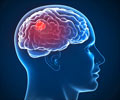New cancer treatment method suggested by scientists is associated with molecular profiling of brain tumor cells.

‘Glioma stem cells possess a wide range of protective mechanisms that make targeted therapeutic influence impossible. ’





The difficulty of the therapy lies in the fact that stem cells may be influenced only in their active phase which is difficult to detect. "The method of stem cells activation is quite risky. However, in their passive state these cells are almost immune to chemotherapy. In cases of late stage tumors one always has to choose between potential risks and benefits of a certain treatment method. We consider the method of "rebooting" cancer cells to be one of the most promising," says Alexander Kagansky, head of the Center of Genome and Regenerative Medicine at FEFU, and a specialist in epigenetics who led the research group.
While certain specific cell channels are blocked in the course of the therapy, the blockage is compensated by a number of molecular links working on a different level.
This issue may be resolved with the help of differential therapy. The idea is to make the stem cells of a glioma reboot the cell cycle, i.e. to bring them into their active state and to attack them unexpectedly with chemotherapy at the moment when they're already not sleeping, but are not yet protected.
"We would like to focus on an extremely important question: whether the peculiarities and molecular mechanisms of the cells surrounding glioma stem cells affect the activation of the latter, or they are activated independently," says Alexander Kagansky.
Advertisement
Modern studies do not pay enough attention to the mechanisms of cancer stem cells activation because they are difficult to identify. They are also genetically similar to regular stem cells, although the cells of gliomas have their specific features, namely genetic peculiarities. Scientists also know that the spreading of the tumors are determined by mutations in specific proteins. However, it is still unclear how these proteins are connected to the activation of tumor stem cells.
Advertisement
However, for this method to be successfully developed, further studies of cancer stem cells hierarchy and the mechanisms that activate or deactivate them are required.
Source-Eurekalert










